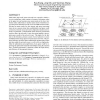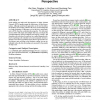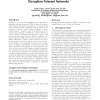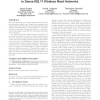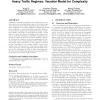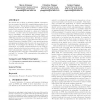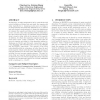MOBIHOC
2009
ACM
15 years 3 months ago
2009
ACM
Most future large-scale sensor networks are expected to follow a two-tier architecture which consists of resource-rich master nodes at the upper tier and resource-poor sensor node...
MOBIHOC
2009
ACM
15 years 3 months ago
2009
ACM
Node mobility and end-to-end disconnections in Delay Tolerant Networks (DTNs) greatly impair the effectiveness of data dissemination. Although social-based approaches can be used ...
MOBIHOC
2009
ACM
15 years 3 months ago
2009
ACM
Routing is one of the most challenging open problems in disruption-tolerant networks (DTNs) because of the shortlived wireless connectivity environment. To deal with this issue, r...
MOBIHOC
2009
ACM
15 years 3 months ago
2009
ACM
In this paper, we propose a practical scheme, called Non-Binary Joint Network-Channel Decoding (NB-JNCD) for reliable communication in wireless networks. It seamlessly couples cha...
MOBIHOC
2009
ACM
15 years 3 months ago
2009
ACM
Due to its low complexity, Greedy Maximal Scheduling (GMS), also known as Longest Queue First (LQF), has been studied extensively for wireless networks. However, GMS can result in...
MOBIHOC
2009
ACM
15 years 3 months ago
2009
ACM
Sectorized antennas can increase wireless network capacity through greater spatial reuse. Despite their increasing popularity, their real-world performance characteristics in dens...
MOBIHOC
2009
ACM
15 years 3 months ago
2009
ACM
Distributed scheduling algorithms for wireless ad hoc networks have received substantial attention over the last decade. The complexity levels of these algorithms span a wide spec...
MOBIHOC
2009
ACM
15 years 3 months ago
2009
ACM
We address the problem of jamming-resistant communication in scenarios in which the communicating parties do not share secret keys. This includes scenarios where the communicating...
MOBIHOC
2009
ACM
15 years 3 months ago
2009
ACM
In this paper, we define multicast for ad hoc network through nodes' mobility as MotionCast, and study the capacity and delay tradeoffs for it. Assuming nodes move according ...
